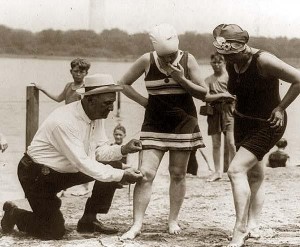I have a large Icon of Christ in my room (see right). What icons from the Eastern tradition do best is to capture “the Look.” No matter where I move in the room Christ is looking right at me. His look is intense, though not severe. In the Eastern spirituality Icons are windows into heaven. Hence this icon is no mere portrait that reminds one of Christ, it is an image which mediates his presence. When I look upon him, I experience that he knows me. It is a knowing look and a comprehensive look.
The Book of Hebrews says of Jesus, No creature is concealed from him, but everything is naked and exposed to the eyes of him to whom we must render an account. (Heb 4:13). But his look in the Icon is not fearsome, it is serene and confident. Hence the text from Hebrews goes on to say, Therefore, since we have a great high priest who has passed through the heavens, Jesus, the Son of God, let us hold fast to our confession. For we do not have a high priest who is unable to sympathize with our weaknesses, but one who has similarly been tested in every way, yet without sin. So let us confidently approach the throne of grace to receive mercy and to find grace for timely help. (Heb 4:14-16)
Particularly in Mark’s Gospel there is great emphasis on the eyes and the look of Jesus. A frequent expression in that Gospel is “And looking at them He said….” Such a phrase or version like it occurs over 25 times in Mark’s Gospel referring to Jesus. Looking on Christ, and allowing him to look on you is a powerful moment of conversion. Jesus himself said, For my Father’s will is that everyone who looks to the Son and believes in him shall have eternal life, and I will raise him up at the last day.” (Jn 6:40) and the First Letter of John says, What we shall later be has not yet been revealed. We do know that when it is revealed we shall be like him, for we shall see him as he is(1 Jn 3:2).
Keep looking to the Lord in this Easter season, especially in the Most Blessed Sacrament and also in the art that most moves you. Look at him and let him look at you.
This video is a wonderful collection of many of the looks of Jesus and the reaction of the people that follows that look. Pay special attention to it. The video also features a lot of “looks” that come from us. Notice how people look upon Jesus, and how they as human beings react as they look on Jesus. Look for the “looks” in this video. The final looks are especially moving.




 We are in the heart of Lent but for one day we step back into the Christmas cycle. It is nine months before Christmas and today we celebrate the true feast of the Incarnation. December 25 is the Lord’s birth but today is His incarnation as he is conceived in his Mother’s womb. TODAY the Word becomes flesh.
We are in the heart of Lent but for one day we step back into the Christmas cycle. It is nine months before Christmas and today we celebrate the true feast of the Incarnation. December 25 is the Lord’s birth but today is His incarnation as he is conceived in his Mother’s womb. TODAY the Word becomes flesh.